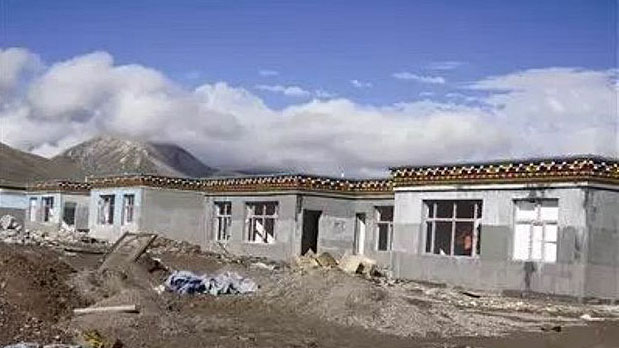
(TibetanReview.net, Apr17’19) – More than 55,000 Tibetan herdsmen in Qinghai Province had ‘abandoned’ their nomadic life under China’s resettlement programme for them since 2005, reported the official globaltimes.cn Apr 16.
China claims that the programme was meant to preserve the area’s fragile ecology rather than to exercise better control over the Tibetan nomads as well as to exploit their land for mining, tourism and other kinds of major projects, as alleged by critics. But this has been strongly questioned by environmental experts, including even from within the country. They have pointed out that the nomads on account of their centuries-old accumulated knowledge and wisdom for sustaining their way of life are the best guarantors of the preservation of the area’s fragile ecology.
The report claimed that the herdsmen were resettled in villages with better environments and living conditions. But numerous reports by international human rights groups have questioned this, saying the lack of alternative means of livelihood had reduced the region’s one’s proud, self-sustaining nomadic community to penury, dependent on politically conditioned and highly limited state aid and subsidies.

Resettlement was stated to be an important part of the Sanjiangyuan Nature Reserve project established in Qinghai in 2000 and approved by the State Council in 2004. Sanjiangyuan in Chinese means “source of three rivers”, referring to the Yangtze, Yellow and Lancang (Mekong) rivers.
The report cited the official Xinhua news agency as saying that over 55,000 herdsmen from 10,140 households abandoned the nomadic life and settled down in brick houses on the Qinghai-Tibet Plateau under the project.
While China claims that the Tibetans nomads resettled themselves voluntarily to fend off criticisms, there was nothing voluntary about the Sanjiangyuan Nature Reserve project which necessitated the resettlement.
The co-called ecological resettlement project was reported to have been launched in May or Jun 2004.
A few of the resettled nomads have found work as rangers in the wetlands and grasslands. Some find seasonal jobs, such as digging for caterpillar fungus or herding in the grasslands from April to October each year, Du Fachun, a professor at Yunnan Agricultural University who studies the resettlement, was cited as saying. He has added that some had opened Tibetan restaurants in logistics centres in Golmud, a major supply point for the Qinghai-Tibet highway.





